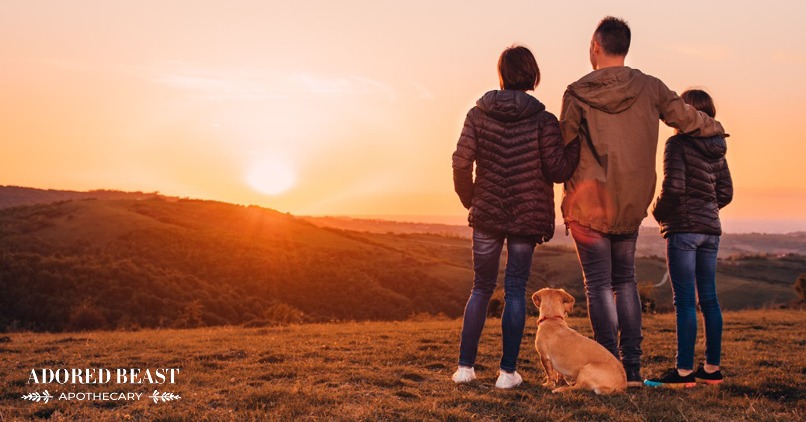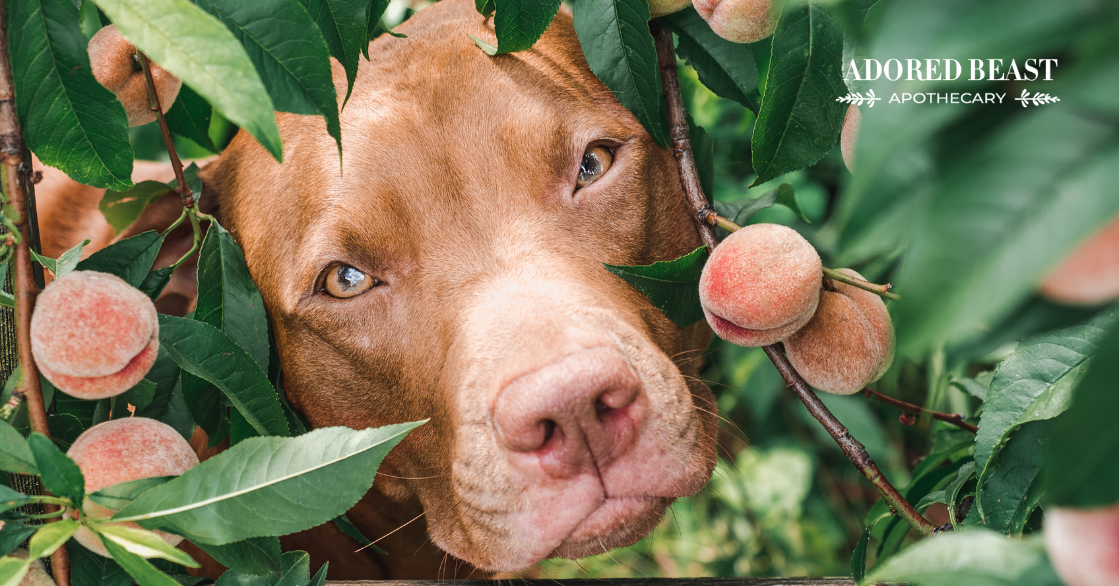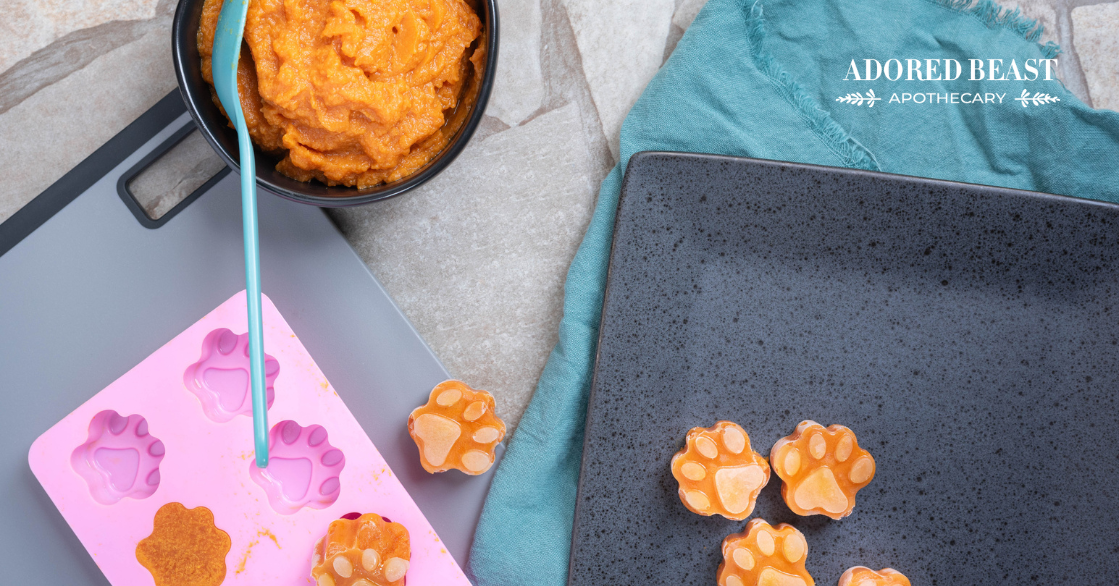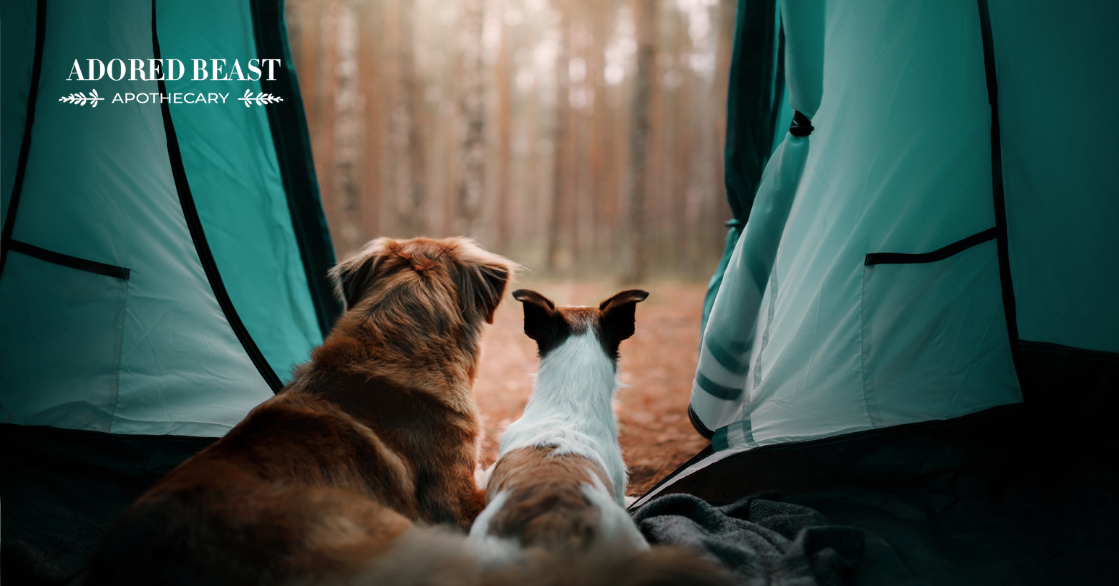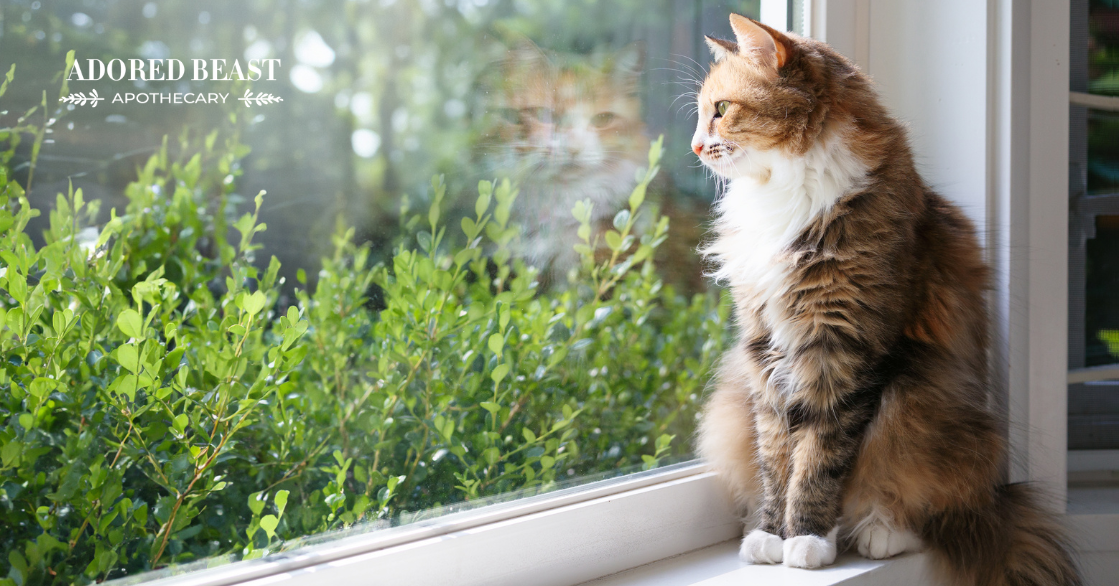When I think about a healthy dog, I don’t just think about diet, the condition of their health or any existing conditions, or other things like that. I look at the whole picture. And that always includes their mental health.
What does a happy, calm and healthy dog look like? How does this manifest physically and behaviourally? And how can we give our pets the healthiest life possible?
A Healthy Dog, Physically and Mentally
There are two components to a healthy dog. When we talk about health, everyone looks at species-appropriate food – even people who are trying to find what food is best for their DNA based on their country of origin and what grows locally to them. But we also need to look at if an animal is being suppressed in other ways based on their DNA.
We know that in people, over 80% of all chronic disease has an emotional component to it, and this is very similar in dogs. That’s why it is important that animals have a species-oriented lifestyle.
We have really reigned in the emotional states of our dogs and tried to urbanize them without looking at the consequences. Emotions are completely connected to a dog’s hormones – cortisol, thyroid, adrenal glands, gut health – and we know that if they are unhappy or suppressed it will impact their health, no matter what. So, we need to look at what is natural for a dog. For example, dogs sniff bums and when we are embarrassed and make them stop, we are removing an important aspect of how they sense if someone is safe.
Let Dogs be Dogs
Another thing is play. It is so important that dogs have movement and fresh air. In fact, a dog’s ancestor, the wolf, would be moving from 30-60 miles per day. Movement feeds the cells and exercises every aspect of the body. But, we have been forcing dogs to be so urbanized that even just seeing their leash excites them, and many people have to try and calm that enthusiasm because they live in an apartment or feel it is too over the top when it’s the highlight of their day. We try to keep our dogs from barking or jumping too much and they are not allowed to just be dogs. We expect them to be humans – but they are not!
There is so much education that we need to spread that dogs need to be dogs as much as they can. We have to let them let loose. We as humans have a lot of ways that we can just let loose, so I truly believe that a big part of health is learning about your breed, and finding out historically what that dog would be doing and try to do or mimic that with them as much as you can and engage them in dog play. If you really want to connect with your dog, leave your cellphone at home or turned off when walking them. Understand what loving your dog really means from the dog’s point of view.
The Health of the Gut
The next thing that impacts overall health is the gut. The gut is more than 80 percent of the immune system and the gut and brain collaborate on overall health. The gut is the first thing that communicates to the brain and sends a signal to the body to keep homeostasis in check. If the gut is not healthy, it won’t matter what you are feeding or what CBD, supplements, or herbs you are giving them – if the gut environment is imbalanced and is unhealthy, the body cannot be healthy.
The Gut as an Eco-system
Think of the gut like an eco-system. If you feed too much of one probiotic or too many similar species of probiotic, you destroy the other bacteria in the gut. This is just like the wolves in Yellowstone National Park. Years ago, the wolf population was exterminated as they were seen as a dangerous species in Yellowstone, and as a result the elk population got so massive that they destroyed everything. The park was declared a natural disaster until a scientist figured out that we just needed to reintroduce the gray wolf back to balance the eco-system.
Unfortunately, in the pet industry, instead of focusing on real gut health making the eco-system balanced, many companies are seeing it strictly as a multi-billion dollar industry and compartmentalizing the gut just as probiotics for the purpose of marketing. Probiotics on the market today have been formulated and developed for humans and are sold for pets but our guts are not the same. One way that carnivores in the wild stay really balanced without taking supplements is just simply by what is in the gut of the prey they are eating. One of the things the prey typically eat is tree bark, so when the wolf eats the animal, they are getting tree bark, which is the prebiotic for the probiotic (meaning, food for good bacteria). That is something that we have to take into consideration when formulating pre and probiotics for dogs.
We as a society are finally understanding how important the microbiome is, but we have a lot to learn. Science is still in the infant stage and the canine microbiome does not make up even a fraction of that research. (That’s why I continue to work with scientists on the world’s first biologically fecal-derived canine species probiotic.)
Native and Transient Bacteria
The next very important thing to understand is that there are two main groups of gut bacteria: native and transient. Humans and our dogs are both born with native bacteria, and transient bacteria come and go. You can think of them like the natives live all the time in the city and the transient are the workers from the suburbs. Our native bacteria lives in the gut lining, but worker bacteria come in, do their job and leave. It’s all a great system, unless you are not feeding your dog and yourself enough prebiotics, in which case the transient bacteria eat all the food and the native bacteria starve because they don’t move. If they are starving, they start to eat their house – the gut lining – which in turn creates gut trauma and leaky gut syndrome.
So, how you would know if the mental, emotional, and physical health is good? You would see that by them not being anxious, or having separation anxiety, aggression, over-grooming, over-licking, or being itchy. Their poops would be normal 99% of the time. They would not be excessively drinking water or excessive panting, and would have abundant energy while playing and be calm and relaxed while sleeping. You would see a healthy coat, clear eyes, clean ears, no anal gland issues and smell a sweet breath.
Living in the Moment
We often hear dogs live in the moment. But they also strive for routine. For many people, these two concepts seem to conflict.
But I don’t think there is a conflict between living in the moment and routine. Even in routine we can be in the moment, not in the future or in the past. The majority of us do not live in the moment. To live in the moment with our dogs, we need to learn from them. I used to tell my clients, the next time you are on Facebook posting pictures or quotes of how much you love your dog, stop and take 15 minutes and actually love your dog! Get off your computer and roll around on the floor with her, be silly, be a dog, show your dog (not the world) how much you love your dog. These guys are teaching us to get off of our computers and phones. They are teaching us to just be. What it will give to you and your dog in those 15 minutes could be life-changing for both of you.
Don’t make walks so routine. Sure, it can be at the same time every day, but it can be far from routine. You can take your dog on different trails, but whatever you do don’t put your earbuds in or talk on the phone!. Look at the leaves blowing or whatever is interesting your dog. Become more mesmerized by simple things and see the beauty in nature. Let your dog sniff and dig, and be interested in what they are digging or sniffing. It’s what people need more of and one of the many gifts they bring to us. Believe me, that are not on their walks wondering if they are beautiful or if the new iPhone is out – they are happy to be alive and with their human soul mate, you.
Really, it is less about routine with dogs and more about what kind of energy you are bringing to the table. I think it is really important to include your dog – ask them about their day and they will feel the energy of your engagement. Put the energy out to discover what they think is interesting and what they like – it is incredible the connection that can bring. We are expecting them to become humanized and we have to allow them to just be dogs. What that means is being in the moment, and I think that is why in this age, we are all so drawn to animals. We lack that and desperately need it. After 20 years of owning a holistic veterinary hospital, I realize how much we all really love our dogs, and all they are asking from us is to listen. They have a ton to teach us in this day and age about our stress levels, anxiety, healthy, prejudice, racism – we just need to pay attention and engage.
A Family Member
What each dog needs to be happy and healthy is individualized within every family – you can’t cookie cut a routine for a dog just like you can’t with a person. When it comes to your dog, your dog’s routine is your family routine. Try as best as you can to include your dog in your family’s routine. For example, if soccer practice is at 7 every Wednesday night, bring your dog if they can come to practice. Don’t leave your dog alone for another 4 hours when you have left her alone all day.
With my dogs, our routine is unique to our life. I have a farm, and I have horses, so my barn routinely is pretty structured time-wise. My dogs come with me to the barn, therefore that is very routine. But I never ever feed my dogs at the same time all the time because I don’t eat at the same time, so I feed my dogs when I eat because they are part of my family, or better said I am part of their pack. If you have a routine feeding time and then come out of it, that is going to be really stressful because food is very important for them. But if they are just used to eating when you eat, that will be their routine, rather than at specific times. Wolves hunt as a pack, so that is a routine. Another routine is that the group comes together and cleans each other – but your dogs don’t live in dog packs, they live with your family. YOU are their pack, so involve them in your routine. Even if that means you include them in bedtime routines or storytime with your children. Basically, and most importantly, include them as much as possible in your everyday life.
Be Present
I want to finish by saying that what you are already doing is great, and you can make it even better by being more focused on your dog when you are doing it. I know I’m saying this a lot, but turn off your computer and phone. Whatever physical activity you are doing right now, do it with your dog instead of putting your brain somewhere else. Roll around, play with them, talk to them, engage with them. I would bet that 80 percent of everyone who walks their dogs are not engaged, their minds are somewhere else. If people could just start with that it would make a huge change, I promise! Or you can read up on your breed, and find out what would they naturally be doing, and then find creative ways to let them do it.
Don’t give up on your older dogs. If they can’t walk, don’t isolate them in the house. Take them for rides, stop and buy them a treat and let them get out and smell for as long as you both can. Don’t rush them, let them take their time. When they smell something, it is like us reading the newspaper. They are getting so much information from their senses that it is really important.
Above all, remember one of the number one things I hear from people that they love about their dog is that they give unconditional love. And part of that is what makes a healthy dog – but it goes both ways. If we are really mindful and observant and showing them our attention, that kind of love goes along way in health, wellness and longevity.

